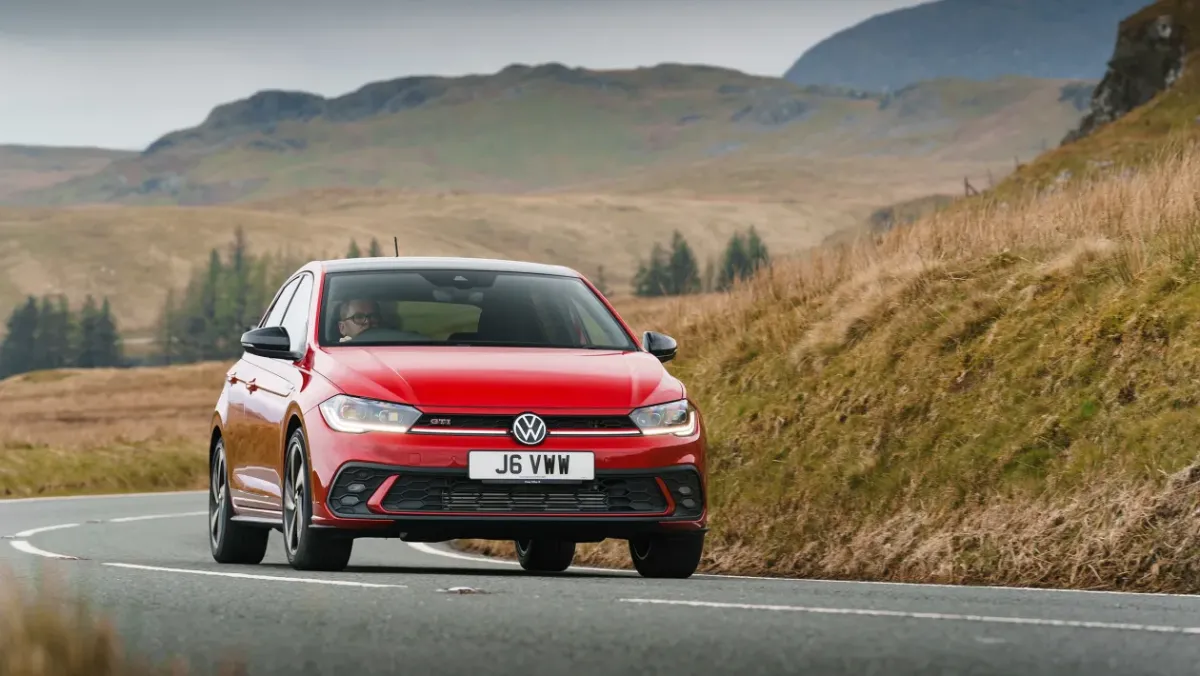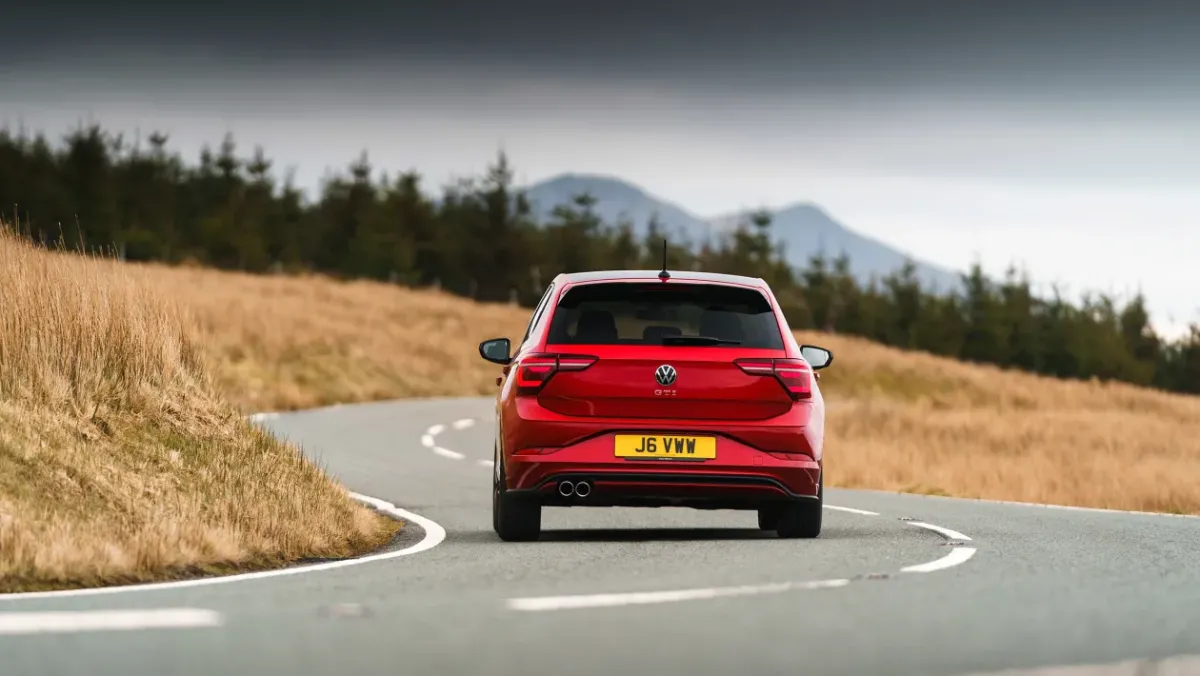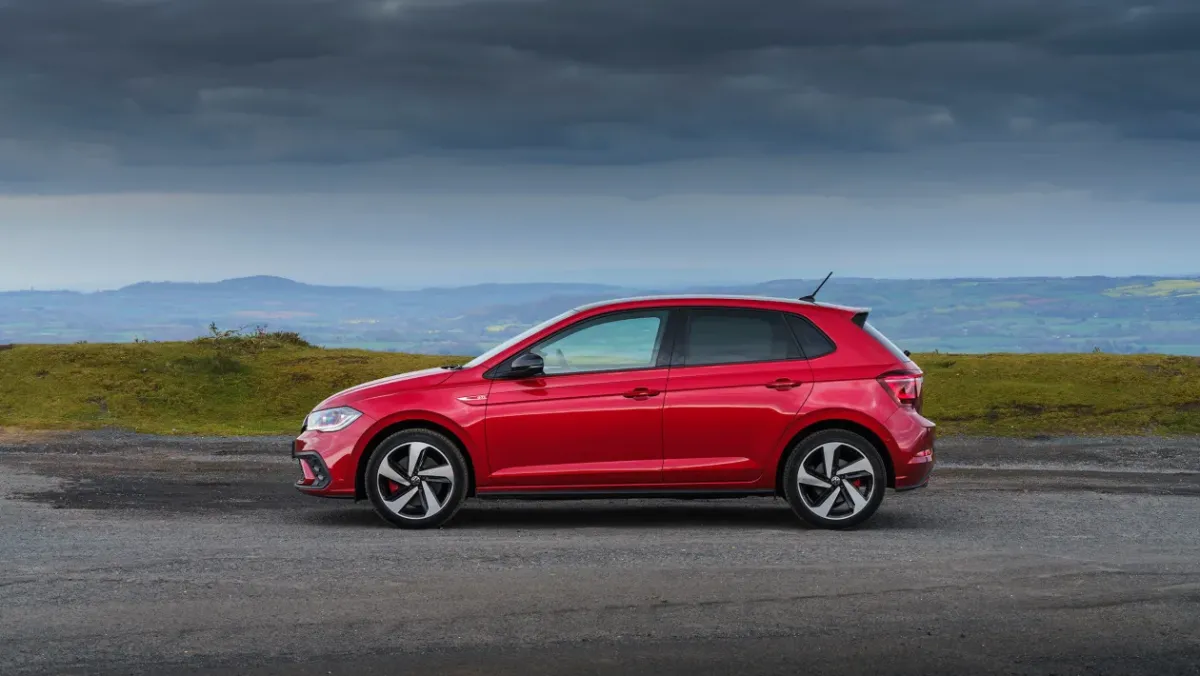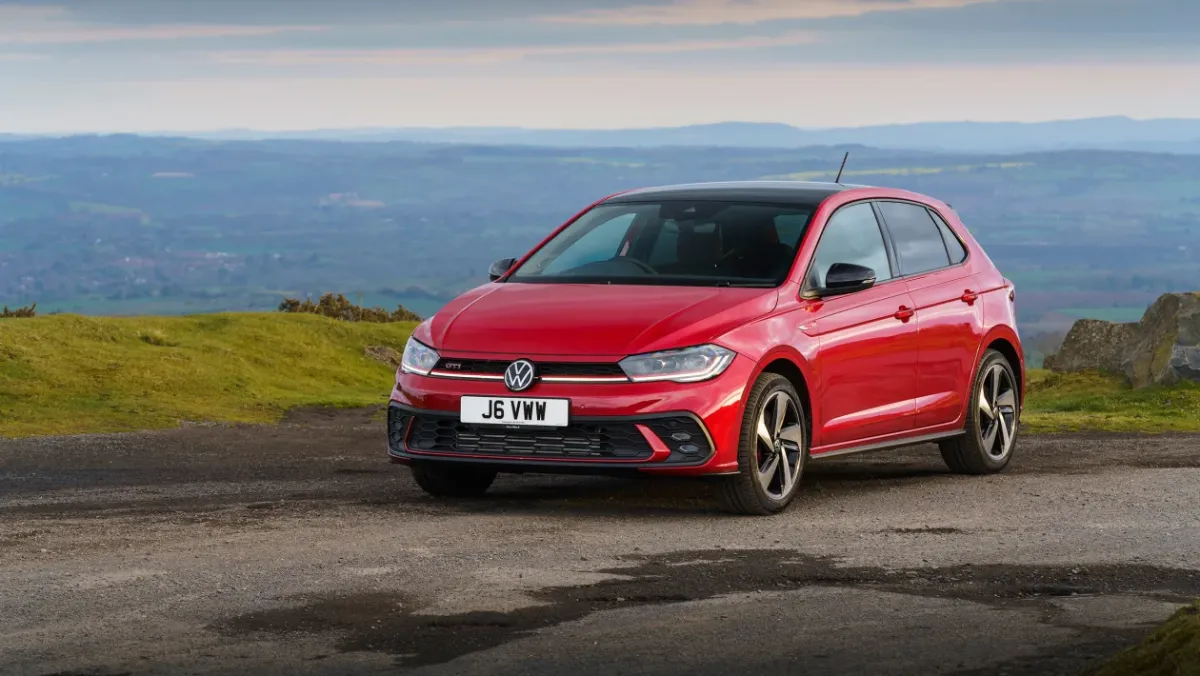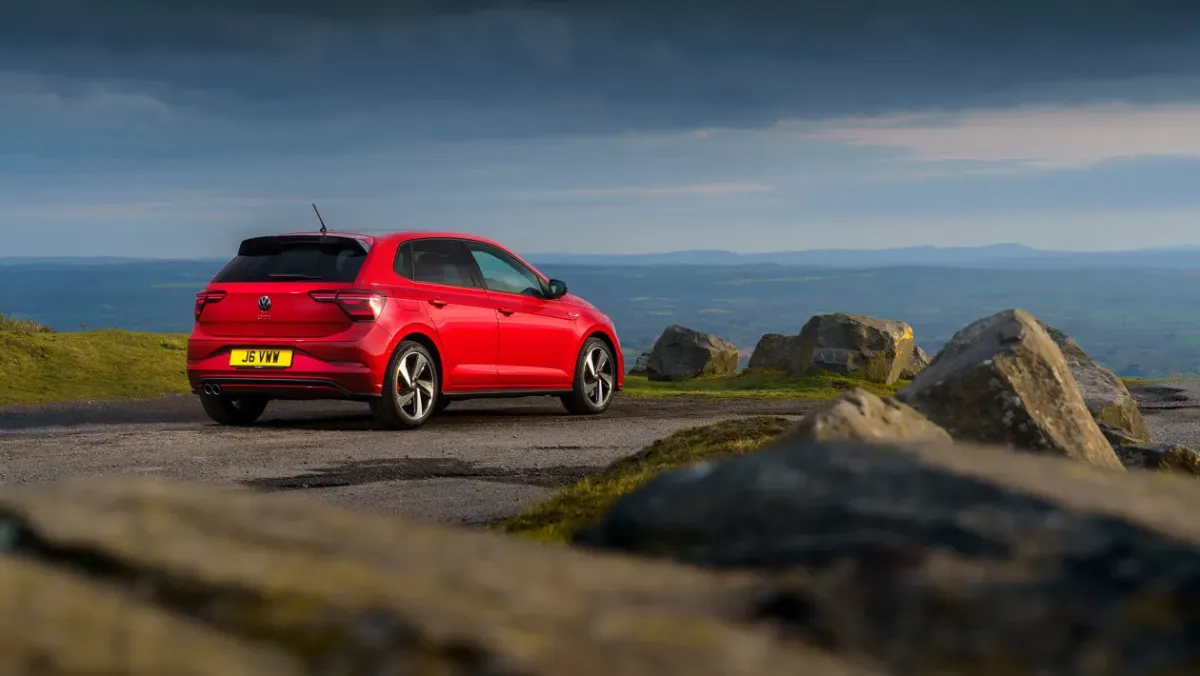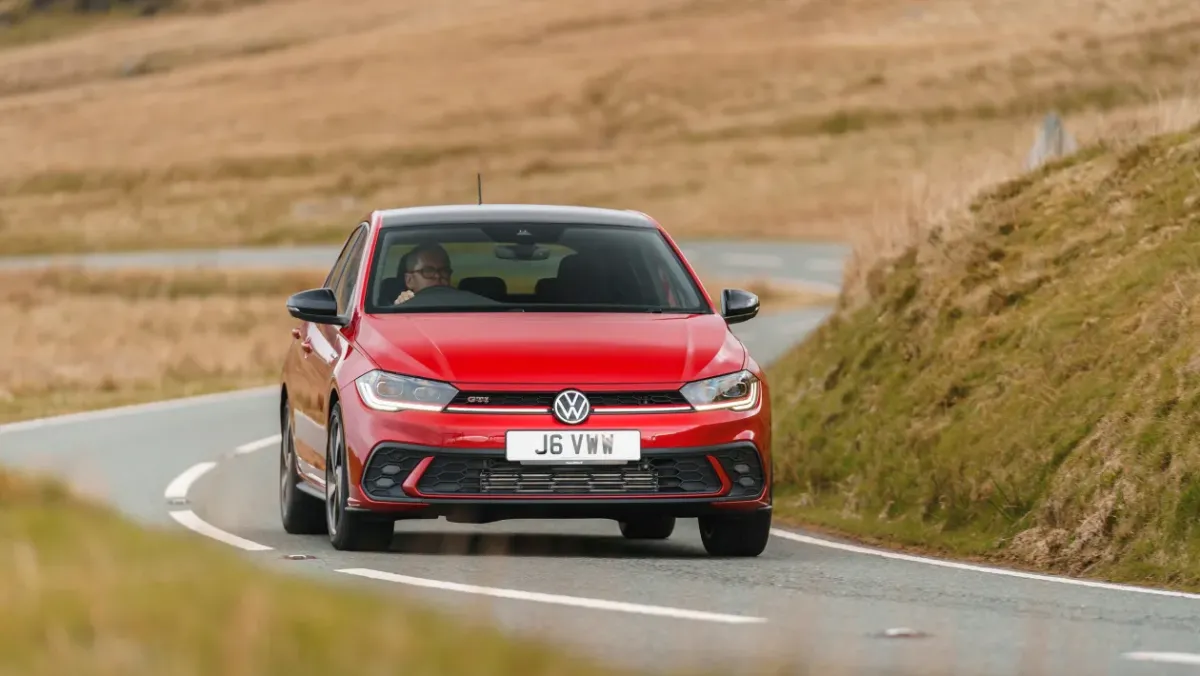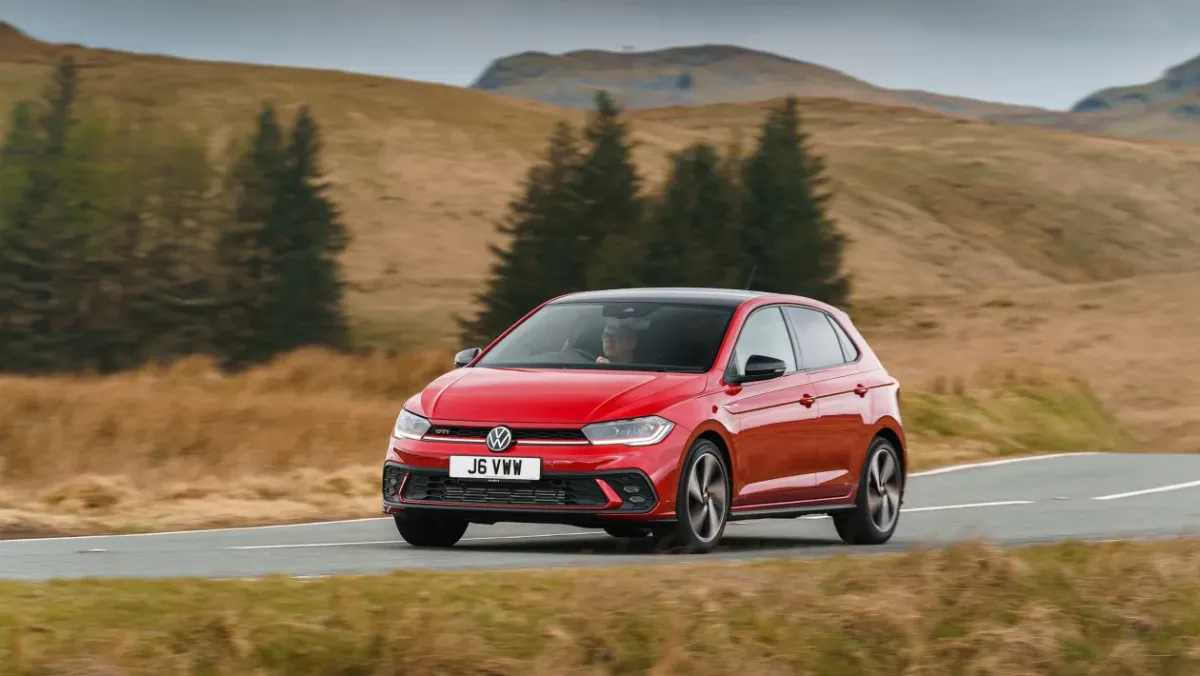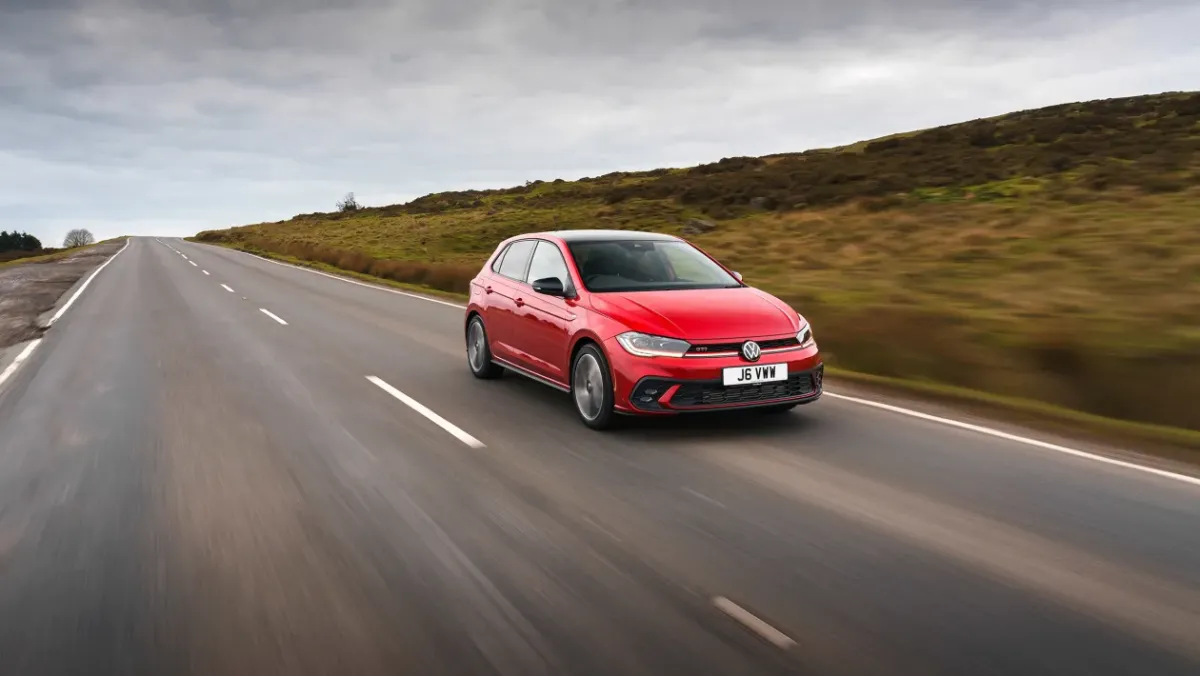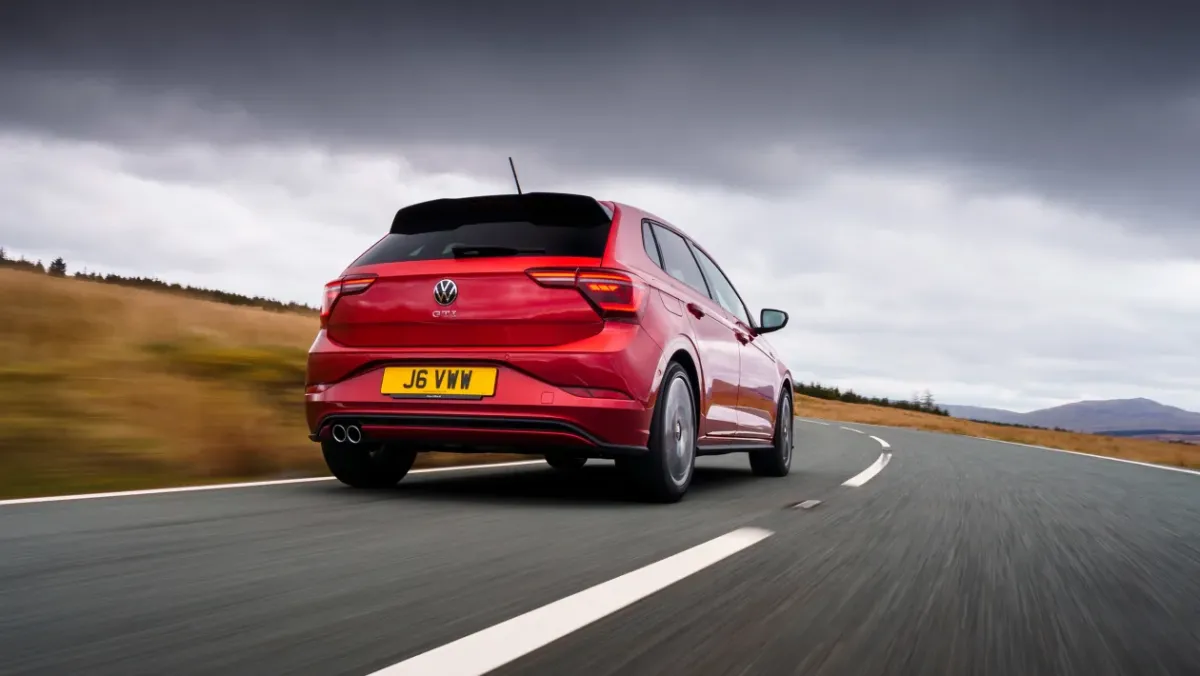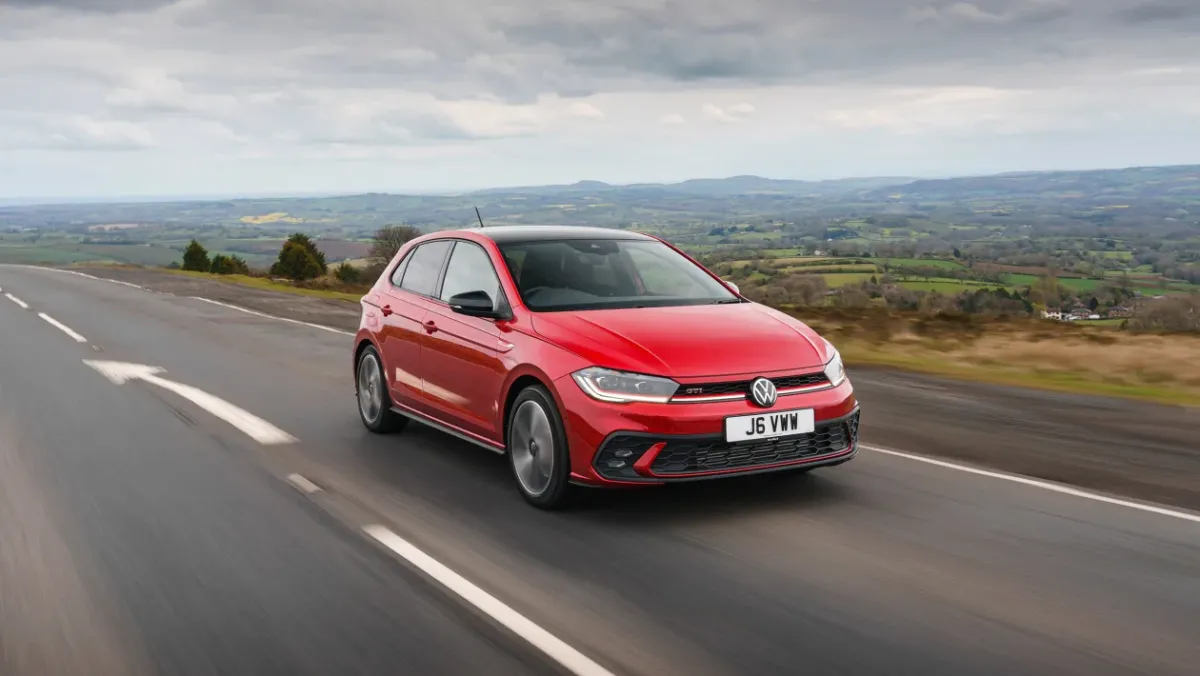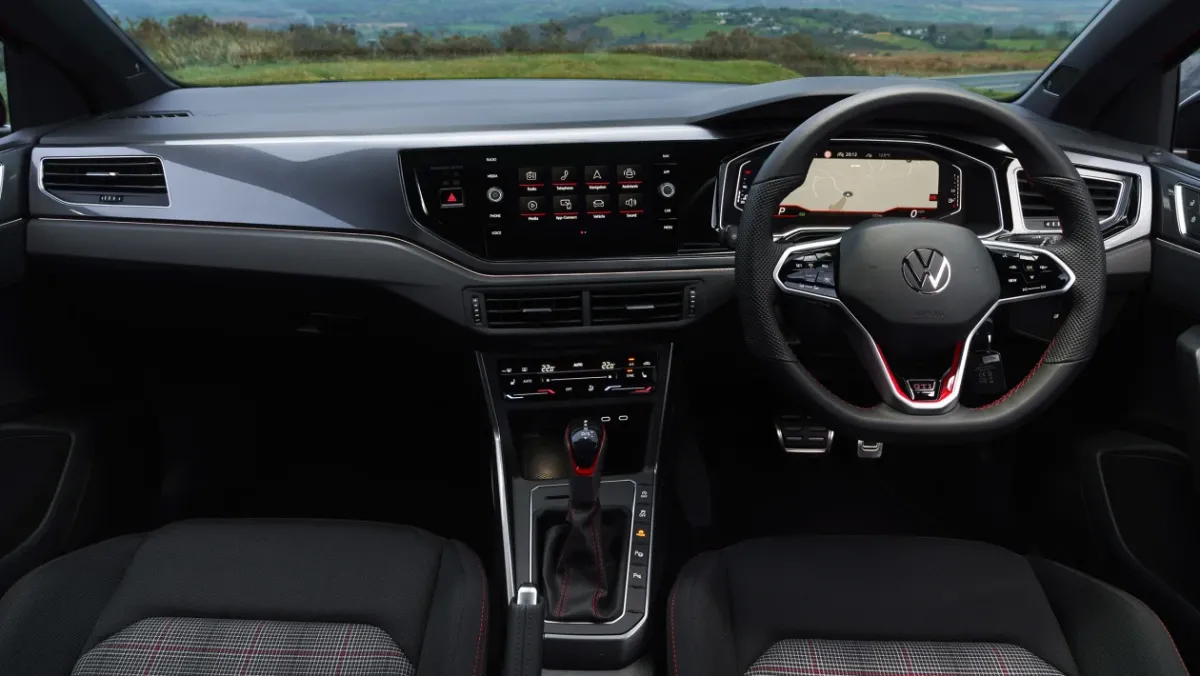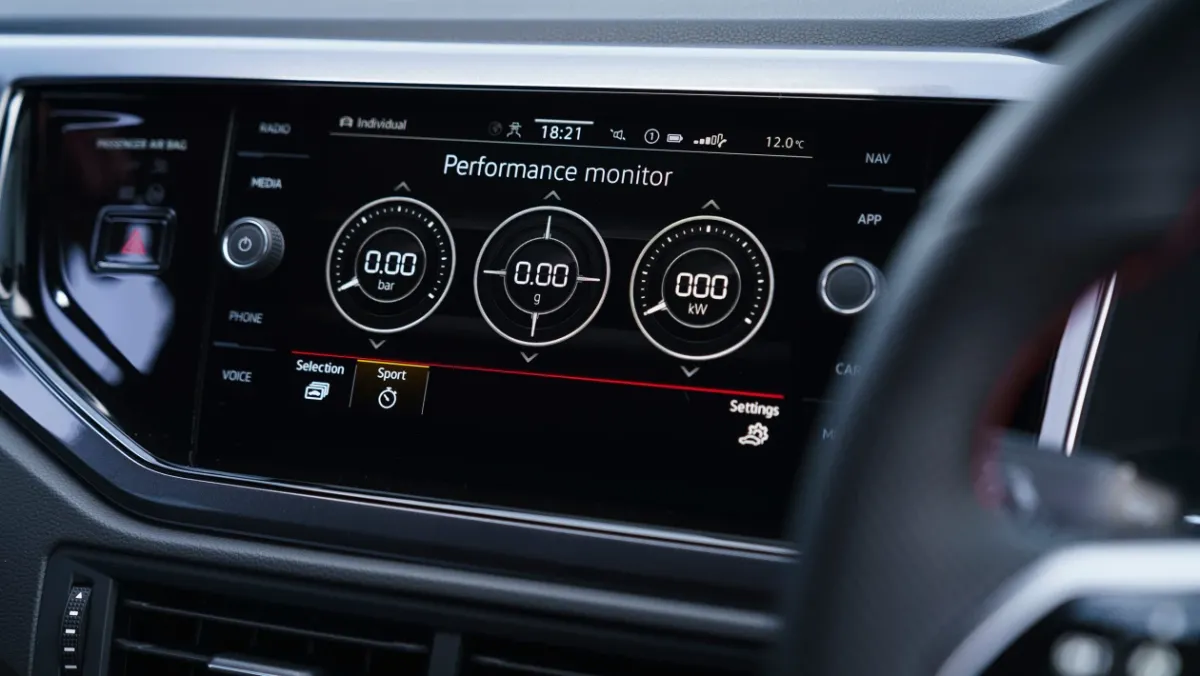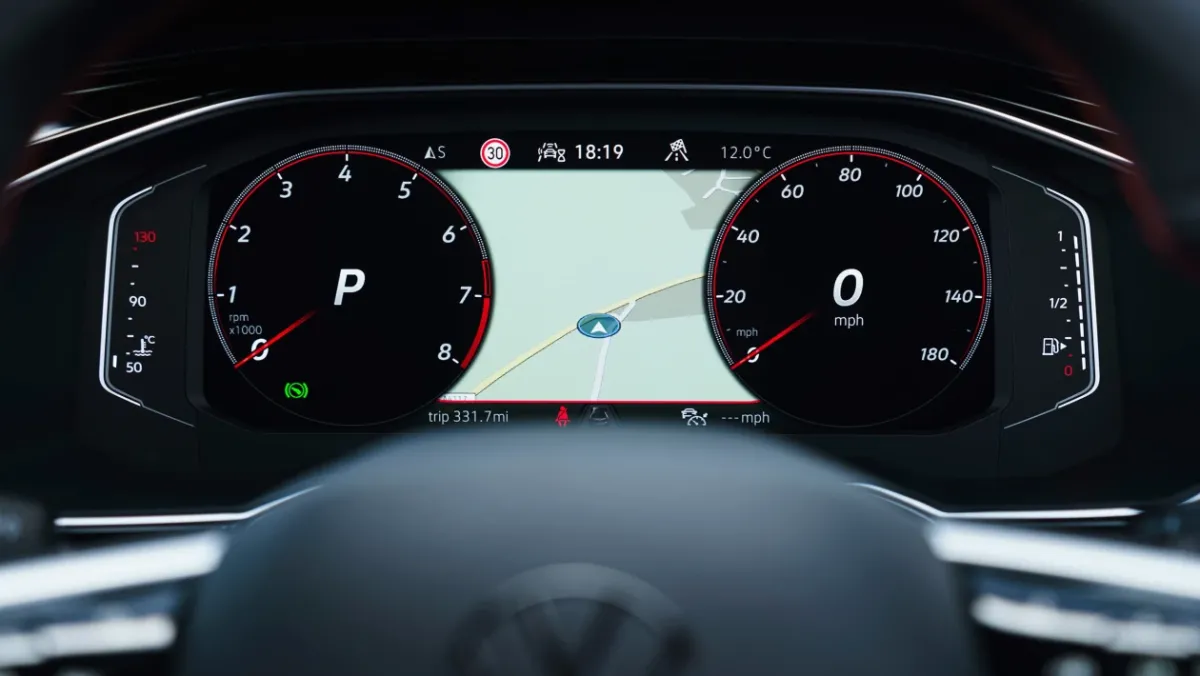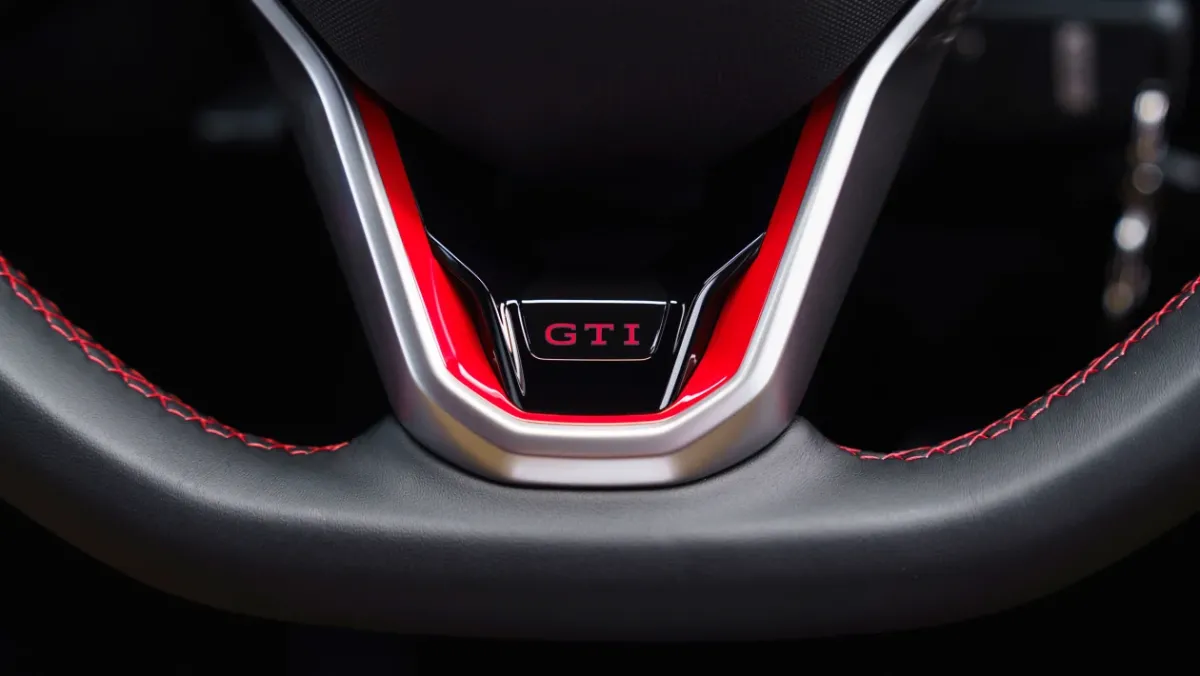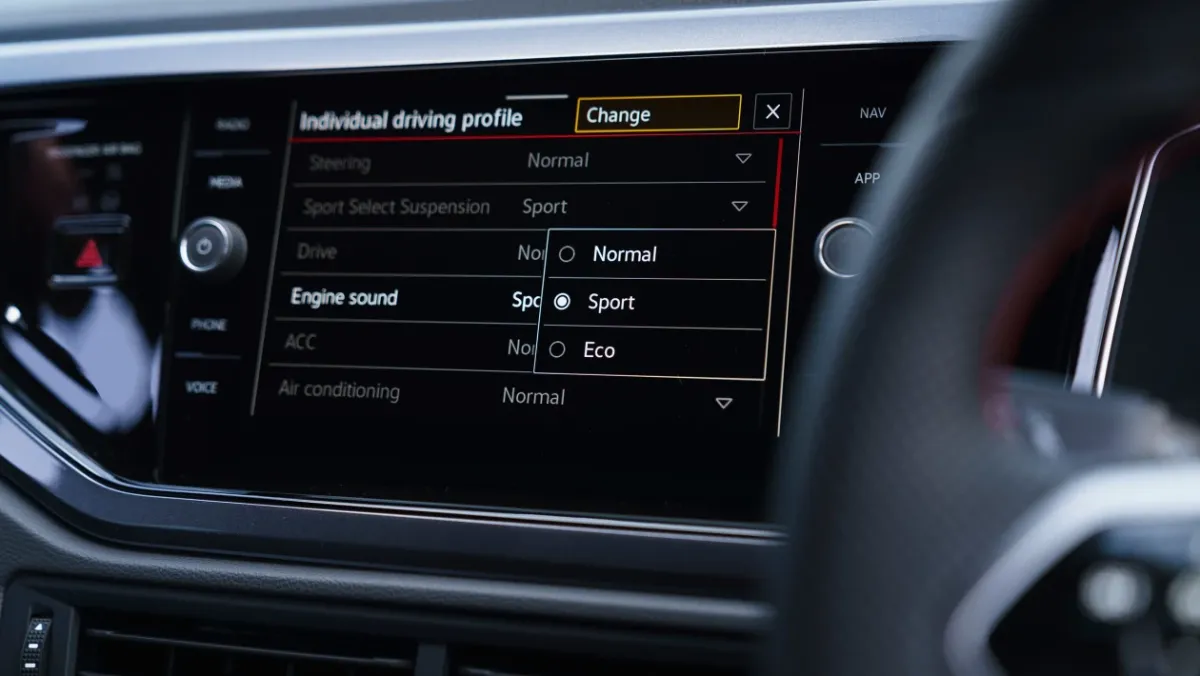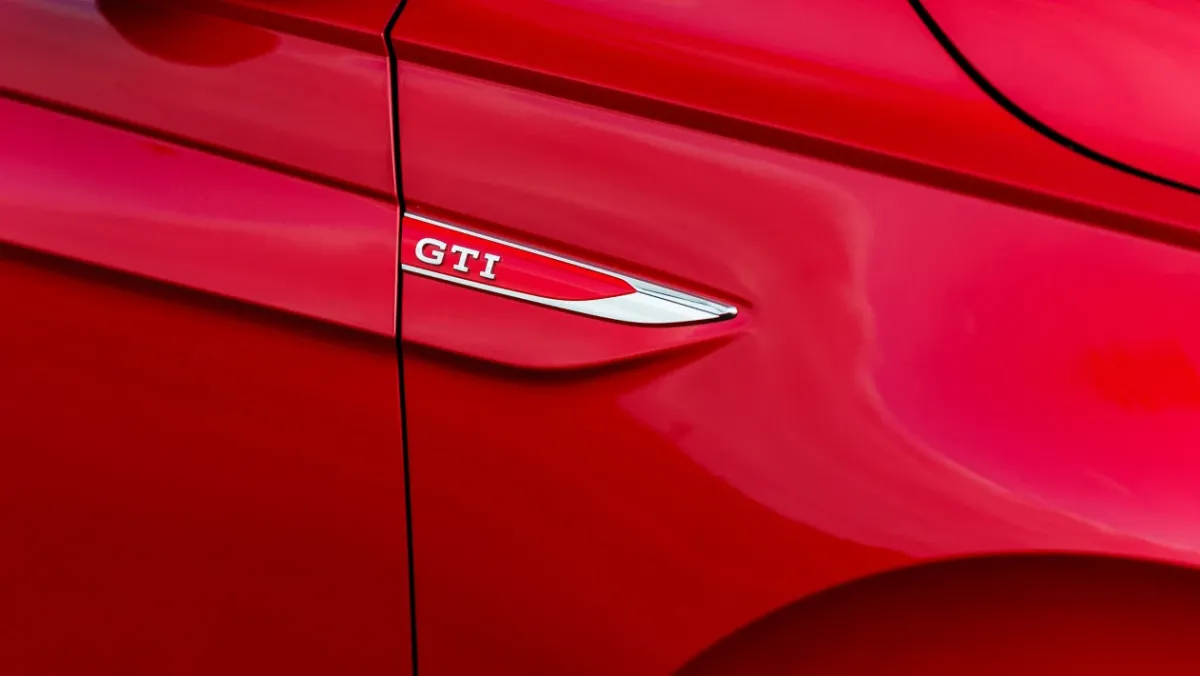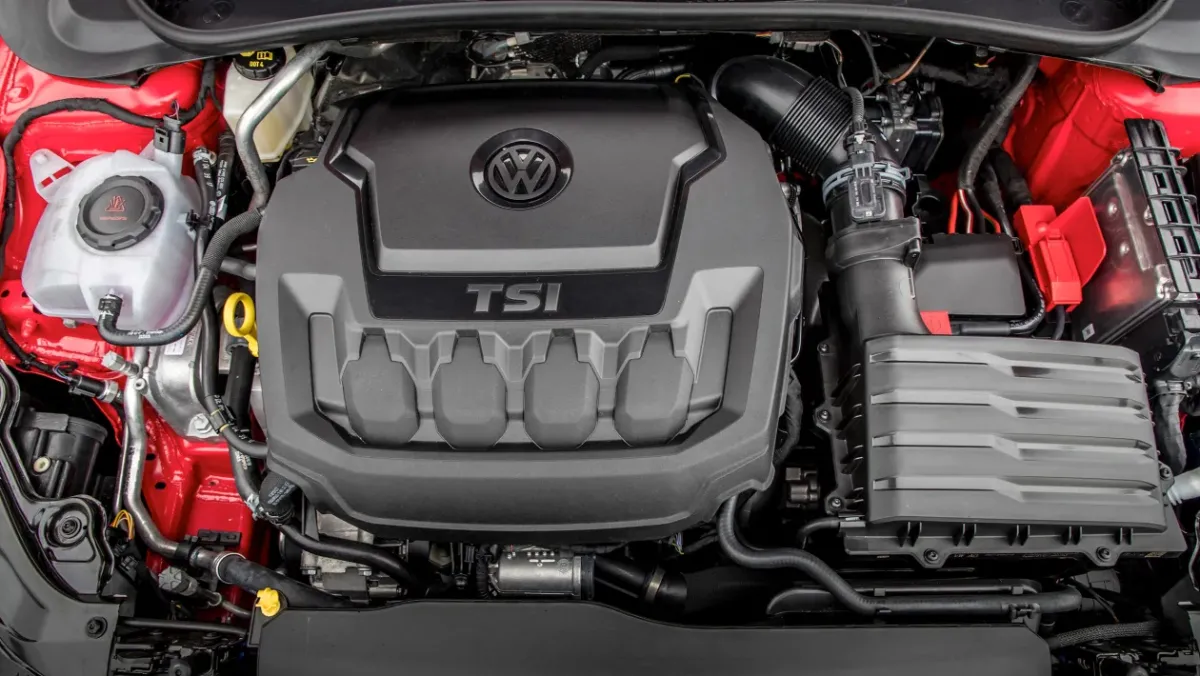More fast Polo than real hot hatchback, the GTI falls short again. As you were, Hyundai i20 N and Ford Fiesta ST
| Torquey, flexible and efficient powertrain | |
| No life to the chassis, tough damping brings little benefit |
The Volkswagen Polo GTI has been given a subtle refresh for the 2022 model year alongside its lesser siblings, bringing with it updates to the styling and some interior interface elements. Like its predecessor, though, this supermini-sized hot hatchback has long found itself in something of a predicament. Typically a more sensible interpretation of the classic supermini, the Polo GTI has never quite been comfortable when transformed from its more humble origins. So, has its update resulted in any meaningful changes?
Visually, this latest Polo GTI doesn’t get off to a great start, as aside from its new lighting units and bumpers, it’s hardly as arresting a sight as its rivals from Ford and Hyundai. It does have specific front and rear bumper assemblies, with trademark GTI design cues such as the honeycomb grille and red highlights, but even they struggle to lift the GTI above indistinct.
Under the skin, the Polo GTI shares the Golf’s MQB platform (albeit in a simplified form), a brawny EA888 turbocharged 2-litre four-cylinder engine and VW’s virtual XDS front diff. And with similar power and weight figures to those of the brilliant Mk5 Golf GTI, there’s plenty of reason to hope that it shares some of that car’s brilliance, only in a smaller and more contemporary package.
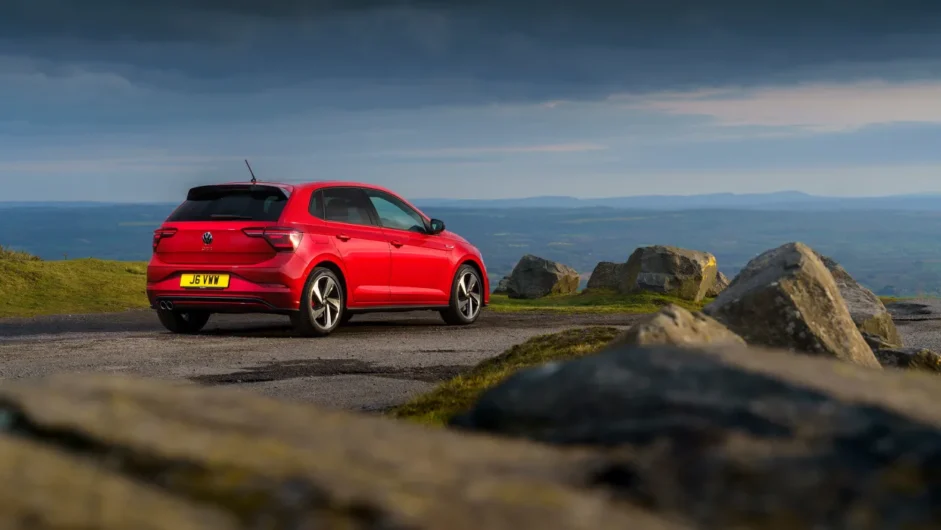
Prices, specs and rivals
Since the GTI’s reintroduction in 2022 it’s been available as a single model that brought with it a pretty huge jump in price compared to the original. Starting at $30,035, it costs over $6500 more than the previous model did at launch. However, price rises are not just restricted to VW, with them seemingly the norm across the whole industry. Offsetting some of the Polo’s price increase are some extra features, including standard LED headlights and sports seats, but key upgrades such as a reversing camera, an upgraded Beats stereo and 18-inch wheels are still optional. The upshot is that a $34,000-plus Polo is a reality in 2022.
Direct supermini rivals amount to a total of two for the moment, with Ford’s recently updated Fiesta ST and Hyundai’s brilliant i20 N making up the class for now. The Fiesta, now exclusively available in high-end ST-3 form, costs from $28,730. That is if you can find one, as at the time of writing it isn’t possible to configure a new Fiesta due to the problems facing the car industry. You get a lot for your money in the Ford, mind, as it also incorporates the Performance Pack that includes a Quaife limited-slip differential, launch control and rev-matching function. This is in addition to the standard 18-inch wheels and Michelin Super Sport rubber (Polos run on Primacys), Matrix LED headlights, proper bucket seats and a valved exhaust.
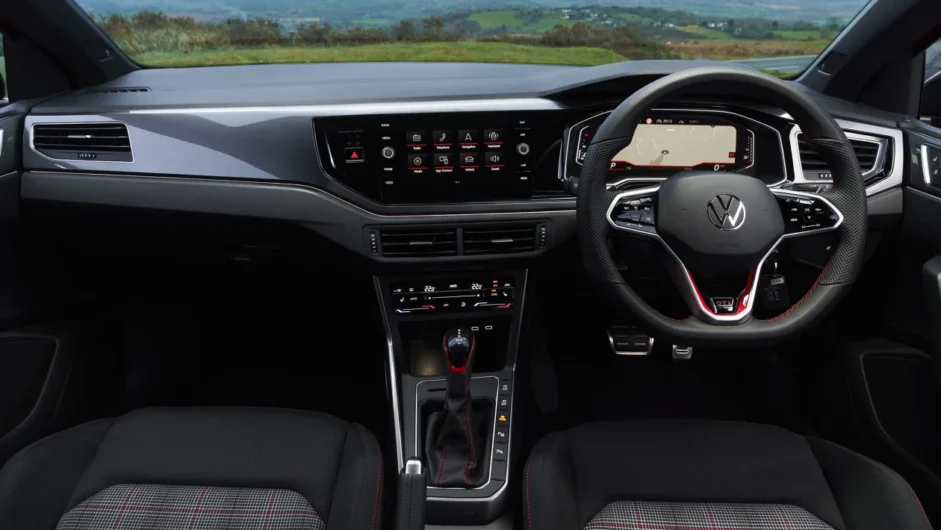
The Hyundai’s even cheaper, at $27,275, and doesn’t scrimp on equipment either with a pretty much identical specification to the Ford with its limited-slip diff, 18-inch wheels and tyre package and a valved exhaust. Toyota’s brilliant GR Yaris is a little more expensive than its supermini rivals, but comes with the hardware to back it up. This starts with its much more powerful three-cylinder engine, plus the clever GR-Four all-wheel-drive system. Base GR Yaris models do cost $33,670, and if you want a Circuit Pack car with its locking differentials, that’ll be $37,450.
Hot Minis are still a thing, with the 176bhp Cooper S kicking things off at $28,155, but the more relevant 228bhp JCW will cost $34,775, and neither is as entertaining to drive as any of the aforementioned rivals, even if refinement and sophistication are notably impressive.
Engine, gearbox and technical highlights
You could definitely say the ears of the evo office pricked up when we heard the hot Polo would finally be fitted with a proper GTI engine. Unlike the previous-generation car, which offered both the 1.4 twin-charged four-cylinder engine (which sounded much better on paper than it was in reality) and later a 1.8-litre TSI engine, this GTI features the well-proven, torque-rich EA888 from the Golf GTI. Now producing 204bhp between 4400 and 6000rpm (up 7bhp), and 236lb ft of torque from 1500 to 4500rpm, it’s right on the money against key rivals from Ford and Hyundai.
The Polo’s sole transmission is a seven-speed DSG dual-clutch gearbox with paddles mounted behind the steering wheel. It feels typical VW, with an inherent slickness to gear changes and good response from the paddles. Town driving is not the transmission’s forte, though, as the GTI will often lurch between gears and hesitate when pulling away, but as the road opens up, the DSG wakes up, slipping between gears and shifting with alacrity.
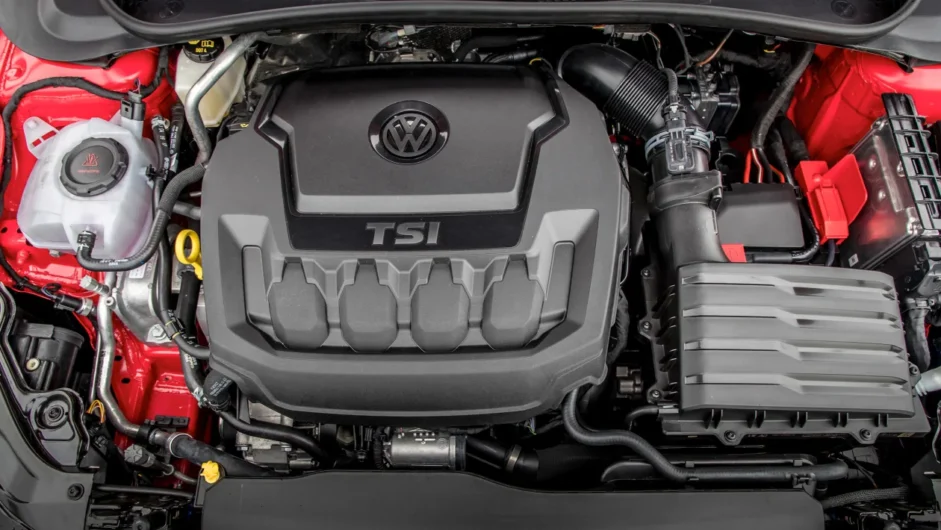
There is one caveat to the gearbox, however: it has an inherent lack of drama. It seems to go about its business without any real urgency – the shifts, although quick, have none of the pomp and circumstance that you’ll find in the Golf, even when pressing on. The effect is it feels like yet one more element that seems to have come from VW’s vast collection of components, rather than being one specifically engineered for this application.
The 2-litre turbocharged engine also has its weaknesses, as while it might share an engine code with units in some very talented hot hatchbacks, in this instance the flat torque curve leaves the engine feeling a little breathless and lacking any real enthusiasm for the upper third of the rev range. This isn’t something that many contemporary turbocharged engines portray, but where the powertrains in the Hyundai and Ford drive sparkling, engaging chassis, the Polo’s chassis is rather more demure. Fingers can also be pointed at the gearing, which is too long between second and fourth. As a result, the engine feels flexible, rather than enthusiastic. Effective, but not very GTI.
Performance and 0-100 time
VW claims the DSG-equipped Polo will rattle off the 0-100kph sprint in 6.5sec, a 0.2sec improvement compared to the last one. Yet, while it sometimes feels that quick when at the right revs, it’s not the most exciting way to make progress down a road, not in comparison to its main rivals, anyway.
There’s plenty of muscle at low speeds, but torque is a little flat in the mid-range – it feels as if the car’s potential is being deliberately reined in so as not to tread on the toes of the Golf. One look at the torque band and you’ll notice that because the engine is relatively low-rated (VWs are pushing over 120bhp more from the same units in the latest Golf R), torque hits hard and stays there, making for good progress, but it doesn’t do much for the engine’s feeling of enthusiasm.
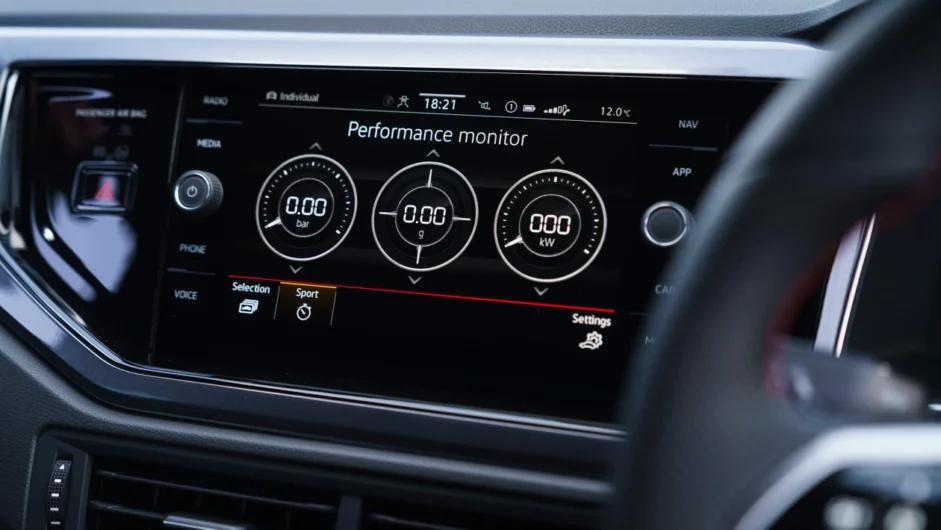
Admittedly, this is something that affects lots of contemporary turbocharged engines, and is something that is also notable in all of the GTI’s immediate rivals. But, where their engines complement fantastic chassis, the engine really is probably the highlight of the Polo GTI’s package, and that’s a problem. Some of this reluctance could also be explained by the tall intermediate gears, as second and third seem to be far too long considering there’s a total of seven to choose between. It is worth noting that despite the constant little amendments due to emissions regulations, the engine does feel slightly friskier than before, but overall it’s not a great interpretation of Audi’s otherwise very good EA888 unit.
Ride and handling
VW has made some big noises about the current-generation Polo GTI’s ‘playfulness’, but we’re not quite sure how well this translates when there are rivals such as the i20 N around. Certainly the Polo’s compact external dimensions (I say ‘compact’, it’s actually larger than a Golf Mk4 in every dimension other than length), low weight and big engine should make for an entertaining package.
Initial impressions are good. There’s some generally well sorted control weights – the steering is initially light, but wakes up as speeds rise, and the throttle and brake pedal response is certainly sharper than in a mainstream supermini, but things don’t really get much better from here.
Like a Golf, it covers ground quickly, with an almost clinical precision. And therein lies the problem. Once you’ve tackled a few corners you’ve pretty much got the measure of the Polo. The steering is quick and precise, but there’s only the bare minimum of feedback, while that chassis doesn’t want to get expressive. Lifting the throttle will tighten the car’s line, but there’s no sense of the puppy-like agility you get in the Hyundai i20 N. Push harder and there’s not a huge amount of bite from the eco-focused front tyres (as fitted to our car on the standard 17-inch wheel option), making the Polo slip before the rear axle can take its share of the load.
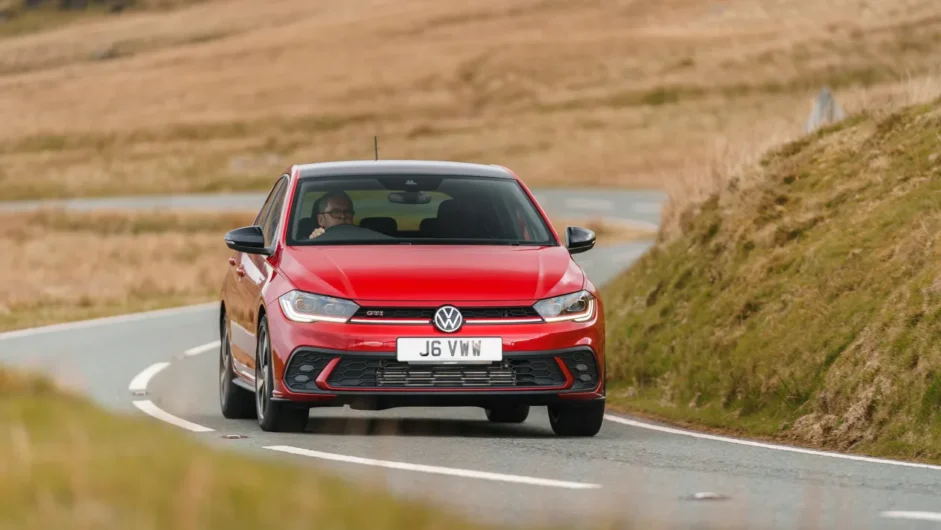
The XDS ‘differential’ is also no substitute for the real thing. With the ESP in its halfway house Sport setting (you can’t turn the systems off completely) the inside wheel simply spins power away out of slower turns. Selecting Sport sharpens the throttle, and adds artificial weight to the steering, but the Polo’s benign character remains. It’s an effective way of getting from A to B quickly, but not a thrilling one.
Take things easy and the GTI is a normal Polo, which means it’s refined, roomy and easy to drive – few superminis are as simple to live with. So it’s a shame much of this good work is undermined by the brittle ride. The car fidgets and hops over small imperfections and only really settles down on the smooth, longer-frequency bumps normally found on motorways.
L/100km and running costs
Now that manufacturers have gotten to grips with the WLTP system, the Polo GTI’s fuel economy numbers have actually gone up compared to the car’s launch figures. Volkswagen now quotes an average of 6.8 L/100km, a couple L/100km higher than the pre-facelift. Even more surprising is that these figures seem quite conservative, with a mid-40s figure averaged over a week of town and motorway driving. It even closed in on 5.6 L/100km on a long run in Eco mode.
The EA888 engine is otherwise well established, and has proven to be extremely reliable. Given its low state of tune compared to some other applications (new versions found in the Golf R are pushing 316bhp) it’s also a lightly stressed unit.
The DSG is somewhat more problematic, as clutches are considered wear and tear items and do need replacing. How long they’ll last does vary though, and, like many dual-clutch gearboxes or the old-school single-clutch semi-automatics, depends vastly on driving style. Actuators and hydraulic pumps can also fail, and while this is less common, any time a dual-clutch transmission case needs to be cracked the repair bills are often high and sometimes excruciating.
Interior and tech
Little if anything has changed with the Polo’s update, which, trust us, is a good thing. That’s not to say it doesn’t have its faults, however, as VW seems to be obsessed with capacitive controls for every part of a car’s function, which broadly speaking just don’t work very well. Of note here are the steering wheel and climate controls, which are similar to those found across the new Golf and Tiguan, and both of which are frustrating to use and pointlessly complex compared to the old units.
The digital interfaces are still based on those of the previous car, though, so while you have to put up with the ancient-looking menu screens and irritating complexity, they’re not as frustrating to use as the system in a Mk8 Golf.
The interior otherwise feels well screwed together, even if the cabin’s materials really are the bare minimum of acceptable. The GTI bits are crucial to lifting its ambiance, as the tartan seats and red stitching, augmented with elements such as the giant slab of red plastic stretched across the dashboard, help lift the interior.
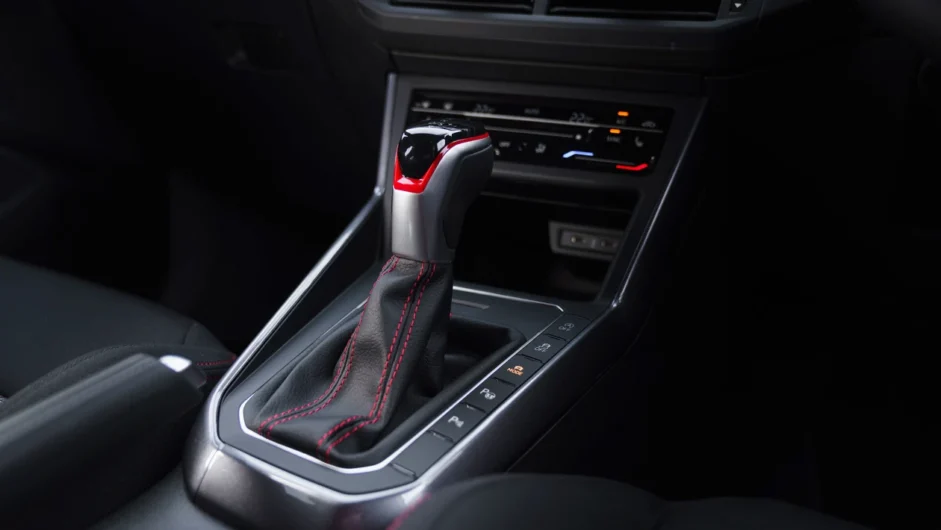
The seats are near perfect, comfortable and supportive, having enough lateral support without resorting to supersized bolsters that restrict access. However, we’d suggest you avoid the micro-suede option, as the shapely standard seats are swapped out for the basic chairs found in other Polo models.
It would be nice to have some more substantial paddleshifters behind the wheel, but they feel reasonably solid and are an acceptable trade-off for their quick-witted responses compared to similar offerings in other dual-clutch supermini hot hatches.
In typical VW style, though, all the touchpoints are almost perfect. The driving position is near spot-on, with plenty of adjustment in the steering and seats. The high-mounted infotainment system is also placed in exactly the right position, close to the driver’s eyeline and without looking like an afterthought, as is the case with most floating screens.
Design
When the current-generation Polo came out it’s fair to say it shocked no one. While it wasn’t a lame duck, it was a dull one, with an overzealous combination of creases that were somehow both fussy and incredibly dull at the same time. For the facelift, the same general styling was applied, with new lights front and rear pretty much making up the bulk of the changes.
Unfortunately, in order to try to emulate some of the styling elements of newer models in the range, like the Golf and ID.3, the Polo has some fairly goofy design elements, such as the rear lights that look far too big now that they stretch onto the tailgate, while the front-mounted LED light bar sort of looks like an illuminated moustache.
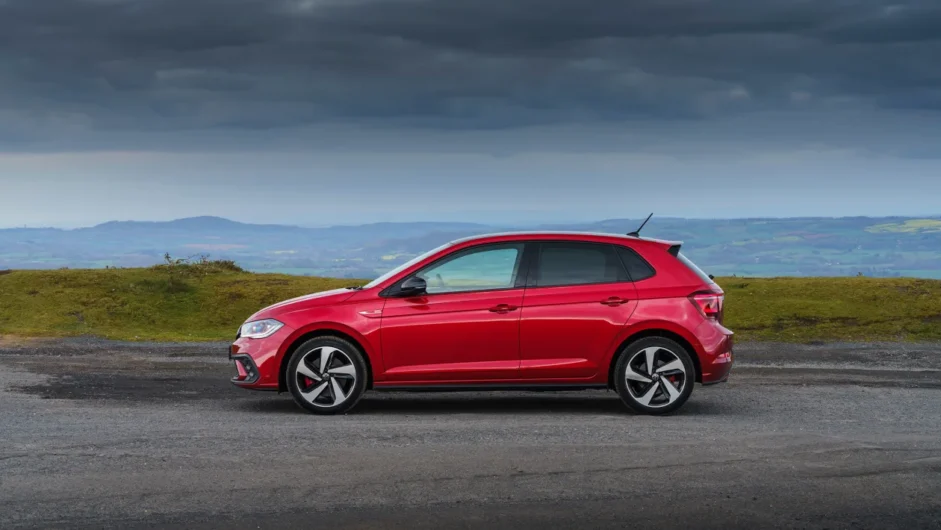
The GTI’s usual paraphernalia is correct and present, though, with liberal use of red highlights on the brakes, badging and the iconic red stripe across the front bumper. GTIs run on standard 17-inch wheels and tyres, but a tastier set of 18s is available on the options list.
As is the usual GTI way, the Polo is grown up, purposeful, but not too obvious – a perfectly formed metaphor about the way it drives. Spec wisely and the Polo GTI will easily slip past unnoticed. Whether that’s what you want in a hot hatchback, however, is something to be considered.
This article originally appeared at evo.co.uk
Copyright © evo UK, Autovia Publishing

